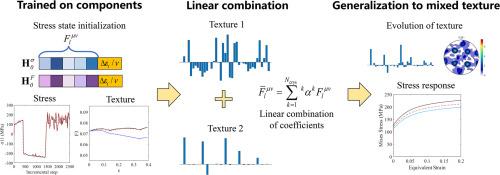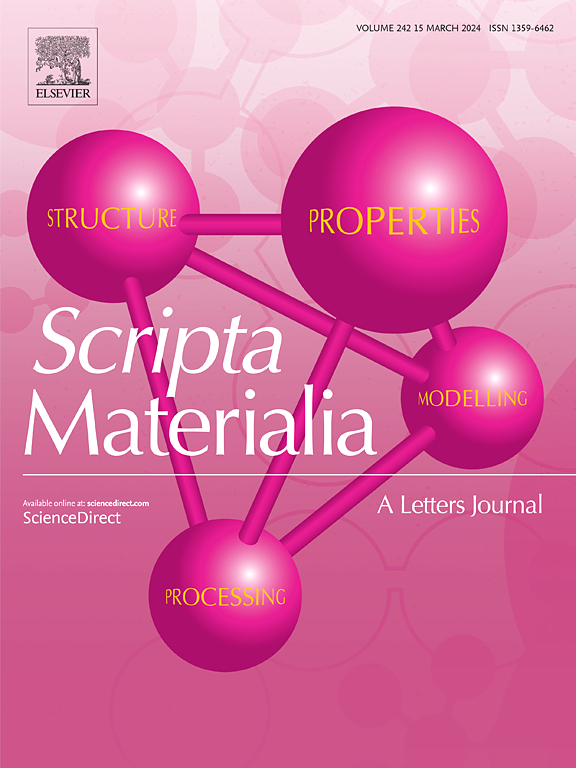塑性变形建模神经网络方法中纹理的高效表示
IF 5.6
2区 材料科学
Q2 MATERIALS SCIENCE, MULTIDISCIPLINARY
引用次数: 0
摘要
晶体织构的表征及其演变对塑性变形的有效中尺度模拟至关重要。尽管欧拉角被广泛用于表示纹理,但欧拉角的高维性和与应力响应的不明确相关性影响了其在基于神经网络的变形建模中的有效性,特别是在应用于不同纹理时。在当前的工作中,在神经网络开发中采用纹理分量描述方法,利用广义球谐波函数的傅立叶系数来预测纹理演变及其影响,其中复杂纹理可以通过基本分量系数的线性组合来描述。随机、立方体和S纹理分量的结果表明,基于傅里叶系数的分量描述策略使模型能够预测各种纹理分量组合的响应,而无需复杂的训练和微调过程。该方法是一种有效的神经网络模型纹理表示方法。本文章由计算机程序翻译,如有差异,请以英文原文为准。

On the efficient texture representation in neural network methods for plastic deformation modelling
Representation of crystallographic texture and its evolution is critical for efficient mesoscale modelling of plastic deformation. Although Euler angles are widely adopted to represent texture, the high dimensionality and unclear correlation with stress responses compromise their effectiveness in neural network-based deformation modelling, especially when applied to diverse textures. In the current work, a texture component description method is adopted in the neural network developments to predict the texture evolution and its effects by leveraging the Fourier coefficients of generalized spherical harmonics functions, where a complex texture can be described through a linear combination of base components’ coefficients. The results with Random, Cube and S texture components illustrate that the component-based description strategy with Fourier coefficients enables the model to predict the responses of various texture component combinations without complex training and fine-tuning processes. The novel description is argued to be an efficient texture representation method for neural network models.
求助全文
通过发布文献求助,成功后即可免费获取论文全文。
去求助
来源期刊

Scripta Materialia
工程技术-材料科学:综合
CiteScore
11.40
自引率
5.00%
发文量
581
审稿时长
34 days
期刊介绍:
Scripta Materialia is a LETTERS journal of Acta Materialia, providing a forum for the rapid publication of short communications on the relationship between the structure and the properties of inorganic materials. The emphasis is on originality rather than incremental research. Short reports on the development of materials with novel or substantially improved properties are also welcomed. Emphasis is on either the functional or mechanical behavior of metals, ceramics and semiconductors at all length scales.
 求助内容:
求助内容: 应助结果提醒方式:
应助结果提醒方式:


